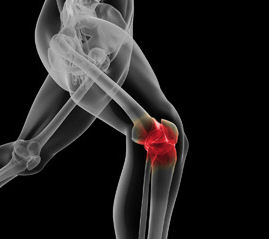 Iliotibial band syndrome, or ITBS, is due to inflammation of the iliotibial band, a thick band of fibrous tissue that runs down the outside of the leg. The iliotibial band begins at the hip and extends to the outer side of the shin bone (tibia) just below the knee joint. The band functions in coordination with several of the thigh muscles to provide stability to the outside of the knee joint.
Iliotibial band syndrome, or ITBS, is due to inflammation of the iliotibial band, a thick band of fibrous tissue that runs down the outside of the leg. The iliotibial band begins at the hip and extends to the outer side of the shin bone (tibia) just below the knee joint. The band functions in coordination with several of the thigh muscles to provide stability to the outside of the knee joint.
Iliotibial Band Syndrome
Iliotibial band syndrome (ITBS) occurs when there is irritation to this band of fibrous tissue. The irritation usually occurs over the outside of the knee joint, at the lateral epicondyle–the end of the femur (thigh) bone. The iliotibial band crosses bone and muscle at this point; between these structures is a bursa which should facilitate a smooth gliding motion. However, when inflamed, the iliotibial band does not glide easily, and pain associated with movement is the result.
Symptoms of ITBS
As stated previously, the function of the iliotibial band is both to provide stability to the knee and to assist in flexion of the knee joint. When irritated, movement of the knee joint becomes painful. Usually the pain worsens with continued movement, and resolves with rest.Common symptoms of ITBS include:
- Pain over the outside of the knee joint
- Swelling at the location of discomfort
- A snapping or popping sensation as the knee is bent
Endurance athletes are especially prone to developing iliotibial band syndrome. Athletes who suddenly increase their level of activity, such as runners who increase their mileage, often develop iliotibial band syndrome.
Treatment of ITBS
Treatment of iliotibial band syndrome begins with efforts to control the inflammation. The initial phase is:
- Rest
The first step to allowing inflammation to subside is to allow the joint to rest sufficiently. If cross-training does not cause discomfort, then it is reasonable. - Ice
Icing the area of discomfort can help to relieve the pain and settle the inflammation. - Anti-inflammatory Medications
Anti-inflammatory medications are frequently recommended to help relieve inflammation about the iliotibial band.
Once the acute symptoms are controlled, patients should make efforts to increase flexibility and strength of the hip and knee. Most rehabilitation protocols focus on both hip and knee function, as the iliotibial band requires proper mechanics of both of these joints for normal function. Working with a physical therapist can help you ensure you are developing an appropriate treatment strategy. Runners, cyclists, and other endurance athletes should find cross-training techniques that allow maintenance of their endurance without continuation of their discomfort.A cortisone injection into the area of inflammation may also be attempted, usually after these other treatments fail. If all else fails to relieve the discomfort of ITBS, surgery is an option, but only in very rare circumstances.
